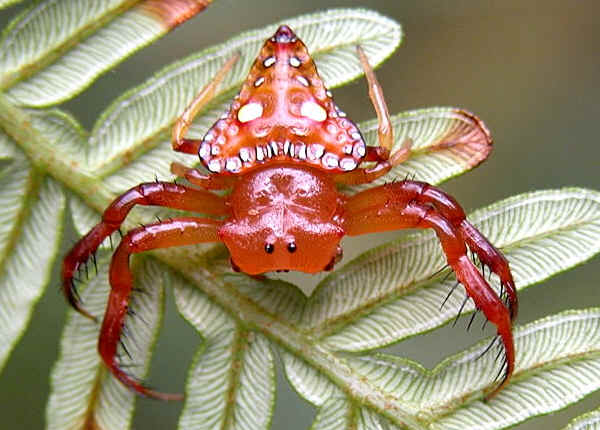Don't Believe Everything You Hear
There are a lot of scary spider stories out there. Are any of them true? The answer is, probably not. Let's look at some common myths about spiders.
1) Spiders will suck your blood. When a spider bites you, it doesn't want to suck your blood. It's warning you to stay away, and it does this by punching holes in your skin.
2) Tarantulas can kill you. Yes and no. There are no recorded deaths from a tarantula bite, but some South American tarantulas are known to have deadly venom. North American tarantulas are basically harmless. In most cases a tarantula bite will feel like a wasp sting. Tarantulas are actually very shy spiders, and generally only bite if you try to pick them up.
3) All spiders spin webs. Actually, a good number of spiders don't spin webs at all. Wolf spiders, jumping spiders, and tarantulas are some examples. Some of those spiders that don't spin webs can still produce webbing, but they use it solely to protect their territory.
4) Spiders will bite you for no particular reason. Spiders bite when provoked. Simply being caught under your shirt is enough to make a spider feel trapped. If a spider is threatened or cornered, it gives a warning bite (often without using poison). Continued provocation can lead to multiple bites.
5) Daddy-long-legs are the most poisonous spiders in the world, but can't bite you. No one's sure how this rumor even started. Harvestmen don't have poison. Cellar spiders, which are sometimes called daddy-long-legs by mistake, have a small amount of weak poison, but it's only strong enough to make the bite sting a little.
Fun Facts About Spiders
1) Spiders' lungs are shaped like an open book.
2) Spiders have a circulatory system, including a heart, veins, arteries, and blue blood.
3) Webbing is considered, pound for pound, to be the strongest organic chemical substance on Earth.
-A scientist spent years collecting spider web extract and actually made a spider suit. It repelled a steel baseball bat, bullets shot at close range, and even withstood getting hit by a pickup truck.
4) Baby spiders travel by a process called ballooning, in which they emit a small thread and float on the wind.
-When scientists travel to newly-formed volcanic islands, they find that spiders, which can travel through the air by ballooning, are almost always the first permanent inhabitants.
5) Jumping spiders can jump up to forty times their own body length.
Some Pics of Interesting Spiders:
A Triangular Spider

a jeweled spider

Ladybird Spider
